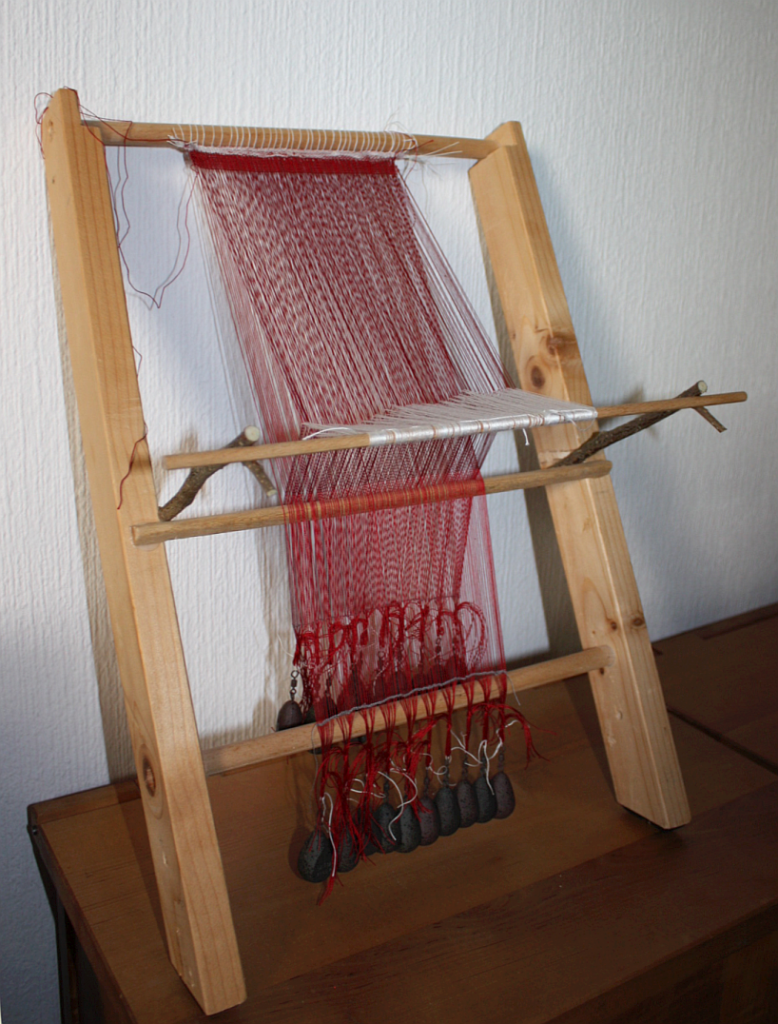Here I am, back home - after having a lovely time at Düppel for the textile day on Sunday!
It was an absolute pleasure to show and tell about distaff spinning, and have some people join me to give this wonderful technique a try. The weather was sunny and warm, but fortunately there was always a little bit of shade to stand in. There were lots and lots of interesting questions by visitors, and at one point I was even taking a group of them further back into history... to starting out textile works (or proto-textile works) with plant fibres and splicing. It was a fortunate coincidence that some nettle plants grew behind my stall.
It was also the first time that I did distaff spinning with a "join in and try" stall. It did work satisfactorily - but has shown me, once more, how important good conditions are for teaching. There is a reason why the amount of participants for a workshop is limited, and why I much, much prefer having a nice closed room to doing a workshop outside, even though it may be nice and pleasant to be outdoors, and I generally enjoy being outside a lot. Distractions are a thing, and do have an impact on the learning curve.
Apart from that extra bit of added difficulty, there were the usual problems when learning how to spin with a distaff - some of them easier to solve than others. One issue is always movement of the distaff (which is easier to remedy when I have the very large clamps that I bring to workshops, and that I could not bring to the Middle Ages, due to obvious reasons). Another very common issue is problems with remembering which direction the spindle is turning, and that's something that I've not yet found a solution for. (Sometimes I have left-handed people in the workshop who have been re-trained to use the right hand in their childhood, and they often have this issue. But it's not limited to them, and makes the whole thing really hard.)
It was a lot of fun, and also an opportunity to try slightly different methods for teaching and explaining, and now I can feel the back of my brain processing everything and trying to see if there's things to change for better teaching in the future... because you never stop learning.




